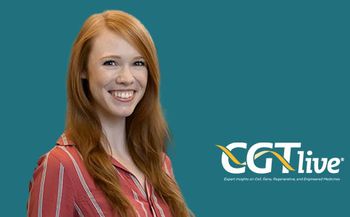
Hematopoietic Recovery After Myeloablative Transplantation May Be Entirely Driven by Hematopoietic Stem Cells
Findings from a preclinical study, which are in contrast with the current biphasic recovery model, have implications for both HSC transplantation and gene therapy.
Hematopoietic reconstitution after myeloablative conditioning and transplantation may be entirely driven by hematopoietic stem cells (HSCs), according to a preclinical study presented at the
“These findings have major implications for HSC transplantation and particularly for HSC gene therapy,” reported Stefan Radtke, PhD, of Fred Hutchinson Cancer Research Center in Seattle, and colleagues. “The ability to directly modify a highly enriched CD34+CD90+ cell population to accomplish both short and long-term engraftment would substantially reduce the typically large and expensive amount of vectors or editing agents needed for the genetic engineering of HSCs.”
Recovery after HSC transplantation has been believed for decades to be biphasic, with short-term progenitors driving recovery for the first 6-9 months and multipotent HSCs providing long-term repopulation. Data from human gene therapy trials have used retroviral integration site analysis to track gene-marked cells seeming to confirm this biphasic model.2
The investigators performed high-density sampling for retroviral integration site analysis in 2 nonhuman primates, who were followed for 4.5 years. HSC clone signatures were collected and HSC contribution was identified in very early samples to determine the onset of HSC contribution and investigate the kinetics of hematopoietic recovery. The contribution of multipotent HSCs clones was detected during neutrophil recovery — a finding is in contrast with the current biphasic model. Moreover, multipotent HSCs became the dominant source for mature blood cells in the peripheral blood as early as 50 days post-transplant.
Further, a hematopoietic reconstitution simulation, informed by observed changes in clonal diversity in vivo, also predicted that hematopoietic recovery is primarily HSC driven and that HSC contribution follows a random pattern. Lastly, in vitro experiments in colony-forming cell assays confirmed that HSCs proliferation and differentiation is a random process.
The investigators noted that the observed changes in the clonal diversity during early recovery suggest a random HSC engraftment and differentiation pattern. Early blood production is driven by HSC clones that are not predetermined but randomly contribute to a limited number of lineages before they disappear—a cell population incorrectly identified as lineage-restricted short-term progenitors, they concluded.
REFERENCES
1. Radtke S, Enstrom M, Pande D, et al. Short- and Long-Term Hematopoietic Reconstitution After Transplantation is Stem Cell-driven and Stochastic: Implications for Gene Therapy. Presented at: American Society of Gene & Cell Therapy 25th Annual Meeting; May 16-19, 2022; Washington, DC. Accessed May 17, 2022. https://annualmeeting.asgct.org/abstracts/abstract-details?abstractId=6705
2. Six E, Guilloux A, Denis A, et al. Clonal tracking in gene therapy patients reveals a diversity of human hematopoietic differentiation programs. Blood. 2020;135(15):1219-1231. doi:10.1182/blood.2019002350
Newsletter
Stay at the forefront of cutting-edge science with CGT—your direct line to expert insights, breakthrough data, and real-time coverage of the latest advancements in cell and gene therapy.

















































